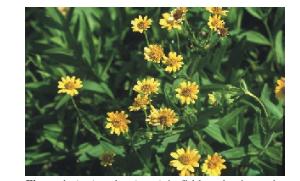
КАТЕГОРИИ:
Архитектура-(3434)Астрономия-(809)Биология-(7483)Биотехнологии-(1457)Военное дело-(14632)Высокие технологии-(1363)География-(913)Геология-(1438)Государство-(451)Демография-(1065)Дом-(47672)Журналистика и СМИ-(912)Изобретательство-(14524)Иностранные языки-(4268)Информатика-(17799)Искусство-(1338)История-(13644)Компьютеры-(11121)Косметика-(55)Кулинария-(373)Культура-(8427)Лингвистика-(374)Литература-(1642)Маркетинг-(23702)Математика-(16968)Машиностроение-(1700)Медицина-(12668)Менеджмент-(24684)Механика-(15423)Науковедение-(506)Образование-(11852)Охрана труда-(3308)Педагогика-(5571)Полиграфия-(1312)Политика-(7869)Право-(5454)Приборостроение-(1369)Программирование-(2801)Производство-(97182)Промышленность-(8706)Психология-(18388)Религия-(3217)Связь-(10668)Сельское хозяйство-(299)Социология-(6455)Спорт-(42831)Строительство-(4793)Торговля-(5050)Транспорт-(2929)Туризм-(1568)Физика-(3942)Философия-(17015)Финансы-(26596)Химия-(22929)Экология-(12095)Экономика-(9961)Электроника-(8441)Электротехника-(4623)Энергетика-(12629)Юриспруденция-(1492)Ядерная техника-(1748)
Preservation of Arnica Montana L
|
|
|
|
Michel Cambornac
History. The arnica and its properties were discovered at the time of Hildegard during the 12th century, but it is mainly from the 16th century that in Germany and Austria this plant has become the panacea for falls and small accidents. All different parts of this plant - flowers, leaves, roots - were adopted for external use (arnica tincture) and for internal use in homeopathy. Traditionally, the flowers and the whole plant were picked at wild stage from the alpine massif to the Carpathian mountains and in several local areas (Vosges, Pyrenees, Central Massif) in France.
Situation. Generally, when there is an important demand, the agriculture takes over from wild picking. But all attempts carried out in Germany and in France never succeeded to control the agricultural production of Arnica in a long-lasting and profitable way. Additionally, the diminution of agricultural activities and the changes in agricultural practices in the Arnica areas largely contributed to its rarefaction.
Finally, the market’s disorganization following the political troubles in eastern Europe has emphasized pressure on the natural areas of western Europe. The consequences were that on the one hand Arnica montana became a protected plant in Germany, and that on the other hand, it appeared in France on several regional lists of protected plants.
Facing threats, protection and risk of shortage, industrial companies using arnica looked for alternative solutions. Then arnicas of different origins appeared on the market (USA, Mexico, Brazil), plants of the genus Arnica, but also others of different genera: Heterotheca or Solidago. It was necessary to clarify the situation, which was carried out during the second half of the 1980s.
 Solution. The genus Arnica comprises some 30 species with about 150 synonyms. Most of them origin in the North of America, two are European and about ten are Asian. The idea was to find among them the species with the closest chemical composition to Arnica montana, and which could be cultivated. The species Arnica chamissonis Less. and particularly the subspecies foliosa has the most comparable chemical composition. The European and German pharmacopeias have therefore registered this species as an equivalent of Arnica montana L.
Solution. The genus Arnica comprises some 30 species with about 150 synonyms. Most of them origin in the North of America, two are European and about ten are Asian. The idea was to find among them the species with the closest chemical composition to Arnica montana, and which could be cultivated. The species Arnica chamissonis Less. and particularly the subspecies foliosa has the most comparable chemical composition. The European and German pharmacopeias have therefore registered this species as an equivalent of Arnica montana L.
In the agricultural field, the cultivation has been confirmed by the National Museum for Medicinal Plants of Milly la Forêt and by the Institute for Medicinal Plants of Chemillé, in France, at the end of the 1980s.
|
|
|
|
|
Дата добавления: 2014-11-18; Просмотров: 442; Нарушение авторских прав?; Мы поможем в написании вашей работы!